Shoei GT-Air 3 helmet review
Published on: 01 November 2023
CLICK SHOEI GT-AIR 3 HELMET TO SHOP WITH FREE UK NEXT DAY DELIVERY
Nobody is really ever going to take issue with the assertion that the Shoei Neotec 3 is the best flip-lid helmet on the market. Well the same can be said of their full-face, sports-touring helmet, the GT-Air. It is, in essence, little more than a full face version of the Neotec. These two Shoei helmets compete with one another in the marketplace. The differences between the two are minor; but inevitably some will prefer one style over the other.
The Japanese brand tends to update its helmets every six or seven years, or so, but the reason that the Shoei GT-Air 3 has been launched so soon after the GT-Air 2 first came to market some four years ago is because of ECE 22-06. This, of course, is the new, much more demanding safety standard that has recently replaced the 22-05 standard, which is an update of a standard that hasn’t really changed since 1982.
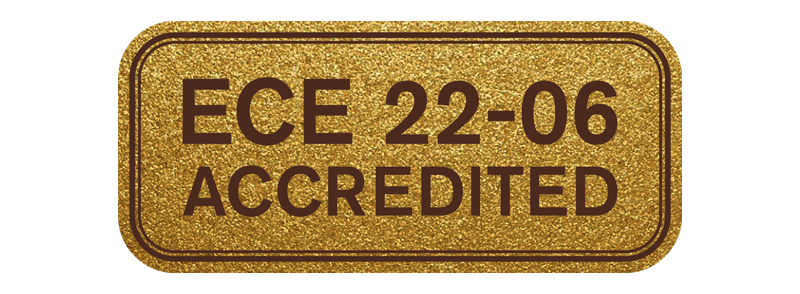
And so this, of course, is the starting point. The new helmet will be safer than the old one. The new standard places much greater demands on a helmet’s shell to resist cracking, and on its ability to absorb the energy of an impact. The new standard incorporates many other new tests, the most significant of which is probably a helmet’s ability to withstand angle impacts.
But as one might expect, and as they have done with their other 22-06 helmets, Shoei has taken the opportunity to update and improve the GT-Air in a number of other respects. And it is those changes that we are going to look at now.
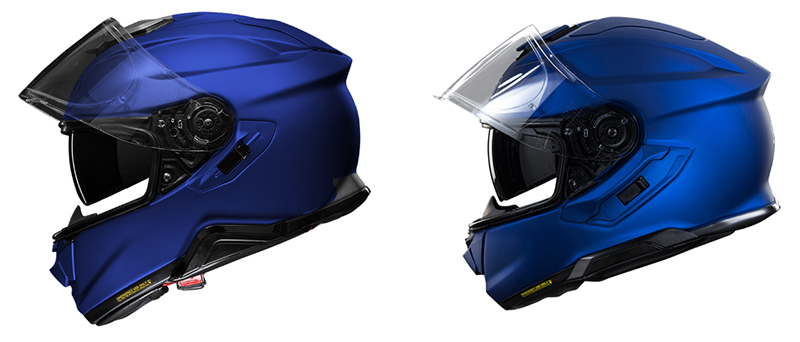
The truth is that the GT-Air 2 and the GT-Air 3 are very similar helmets. From 10 metres you could not tell them apart. And indeed, Shoei has exactly the same audience in mind. So the core fundamentals are identical. A modern, reasonably aggressive design with a subtle but still distinct rear spoiler, supposedly for extra stability at speed. The helmet is equipped with a drop-down, sun visor which, apparently in Shoei’s world, is what differentiates a sports-touring helmet from a full-on, sports helmet. Another distinguishing feature of the GT-Air 2 was its semi-integrated, Sena comms. system.
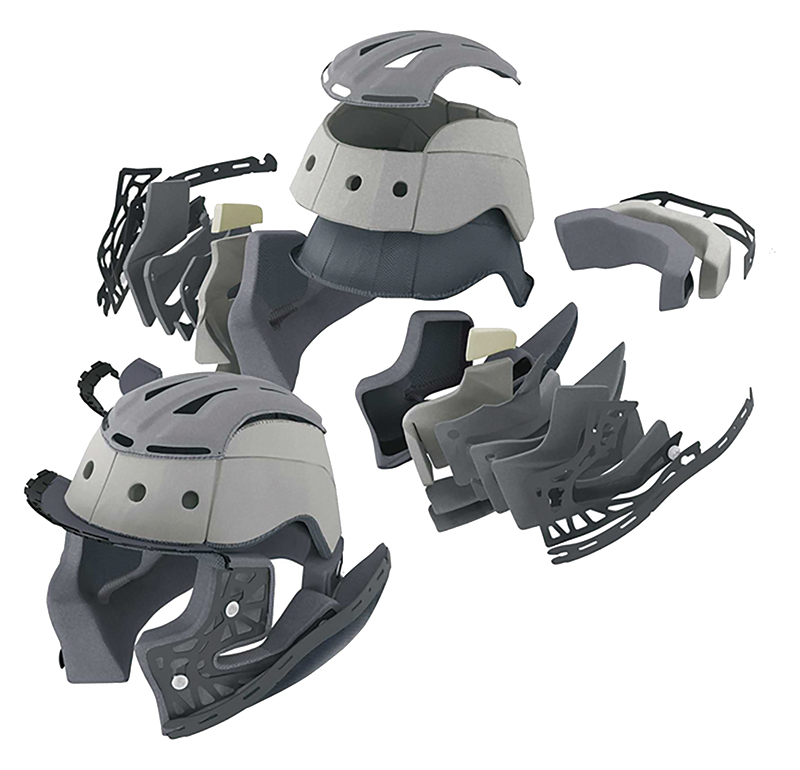
One of the things that separates a Shoei from other helmet brands is the ability to change liners and cheekpads to achieve a custom fit. And it is partly this facility that enables us to make the claim about the GT-Air 2 being the best sports-touring helmet on the market. The new GT Air 3 will obviously also offer this facility.
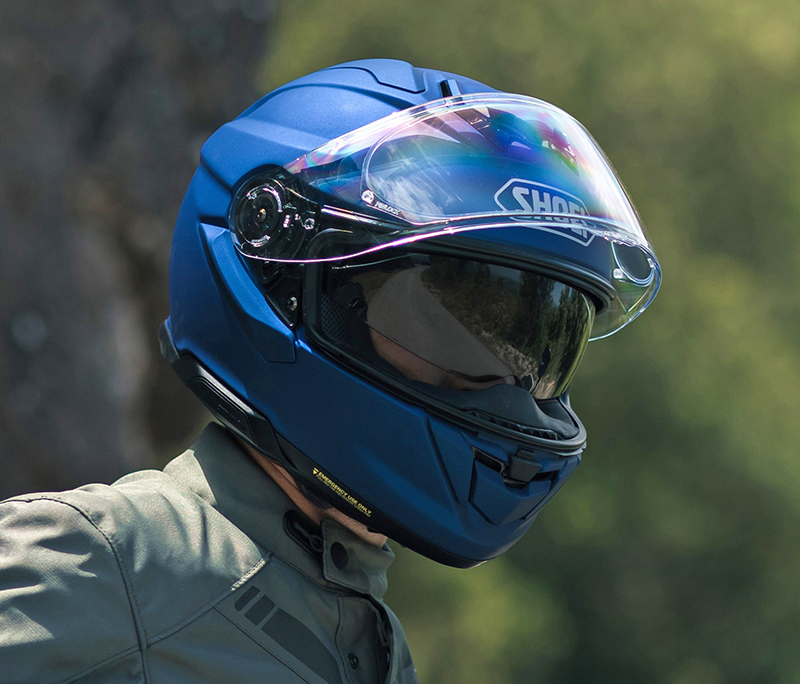
The Neotec 2 was a very quiet helmet. But when Shoei launched the Neotec 3 helmet their main thrust was to make it quieter still. Now, for various reasons to do with how the neck roll fits, a GT-Air will never be quite as quiet as a Neotec, but once again Shoei has worked hard to make the GT-Air 3 quieter than its predecessor.
They have made two changes that will supposedly have an impact on noise. The first is a rounder, less pointed chin profile. And this apparently creates less turbulence. The second is longer cheekpads that extend further towards the rear of the helmet to prevent air coming into the helmet at the back of the neck. And that’s obviously because noise is just air that finds its way into the helmet and reaches the ears.
The chin vent, whose primary function is to help to demist the visor has not really changed, but the brow vent has. It sits a little further forward and so will increase airflow into the helmet.
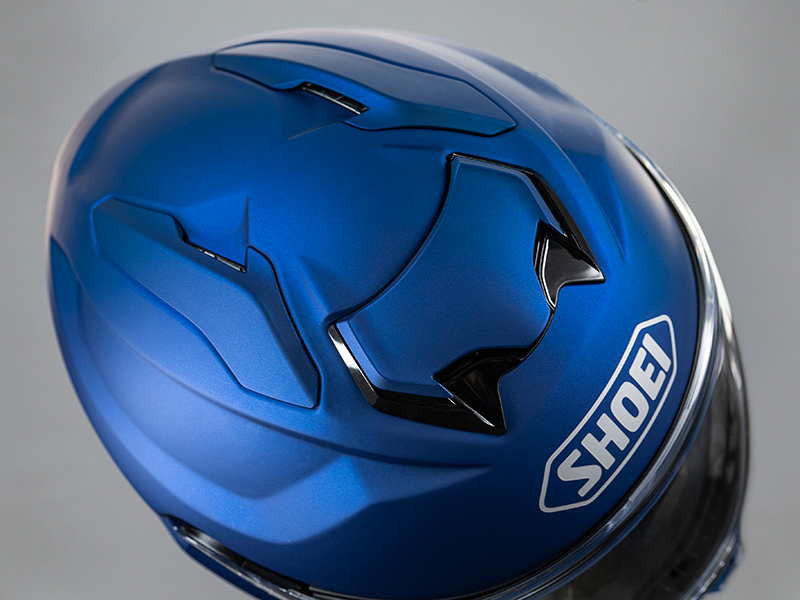
There is a new main visor for the GT-Air 3 that is distinguished by a thicker rib that runs along its lower edge. This will help prevent twisting and distortion in the visor, which can ultimately lead to noise and water ingress. The GT-Air 3 also now has an official crack position. Contrary to the claims made by some reviewers, the Neotec 3 does not have one; the GT-Air 3 does.
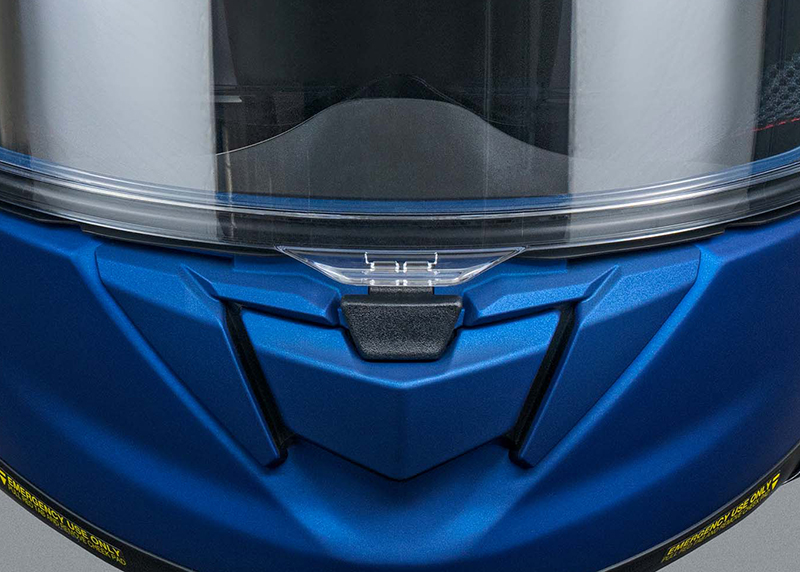
The other changes to the visor are that it has a lock mechanism that has to be released from the centre rather than the left. A locking mechanism is now mandatory under 22-06. When I wrote about the centre locking mechanism on the new Neotec, one person responded that he thought it was unnecessary because he had always found lifting the visor with his left hand to be perfectly acceptable. Well fine, but if you’re in town, and often on the clutch, using your right hand to raise and lower the visor might be deemed preferable.
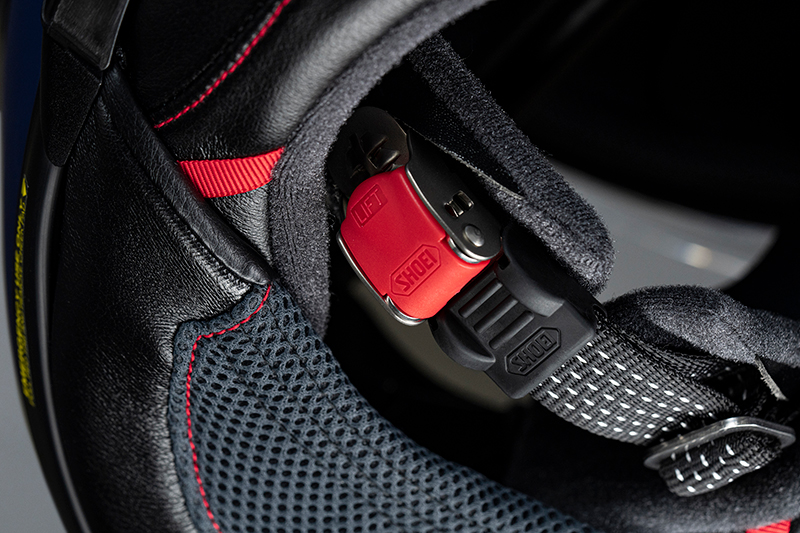
There are perhaps only two other changes that are worthy of note. The first is a thinner neck strap, along with a smaller micro-ratchet fastener. Both will play a part in making the helmet more comfortable to ride in. It is by weaving strands of steel into the strap to increase its strength that Shoei has been able to meet the standard for tensile strength with a thinner strap. The last change, although we feel it’s barely worthy of mention, is a larger chin curtain. It’s larger, but perforated, so we cannot see what it adds. It certainly won’t make the helmet any quieter.
Everything else on the 3 is pretty much as it was on the 2. A sun visor that meets the EN 1830 standard for sunglasses. A comfortable lining that holds the helmet firmly in place, yet which wicks sweat away from the skin. A Pinlock 120 anti-fog insert. And, of course, a semi-integrated comms. system.
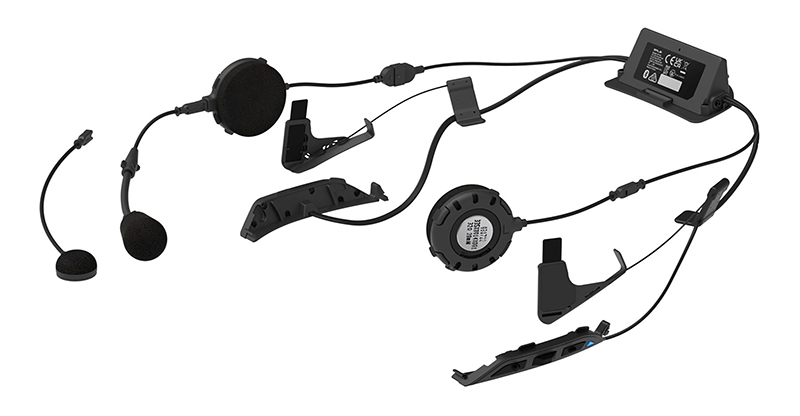
The comms. system offers either Bluetooth or Mesh functionality. Obviously, it is powered by Sena. In fact, it is the same unit that is used for the Neotec 3. On the Neotec, Shoei made extravagant claims about how the way the comms. fitted into the new helmet reduced noise. But they have made no such claims about the same system, and the way it fits into the new GT-Air 3, so we assume it has not reduced noise.
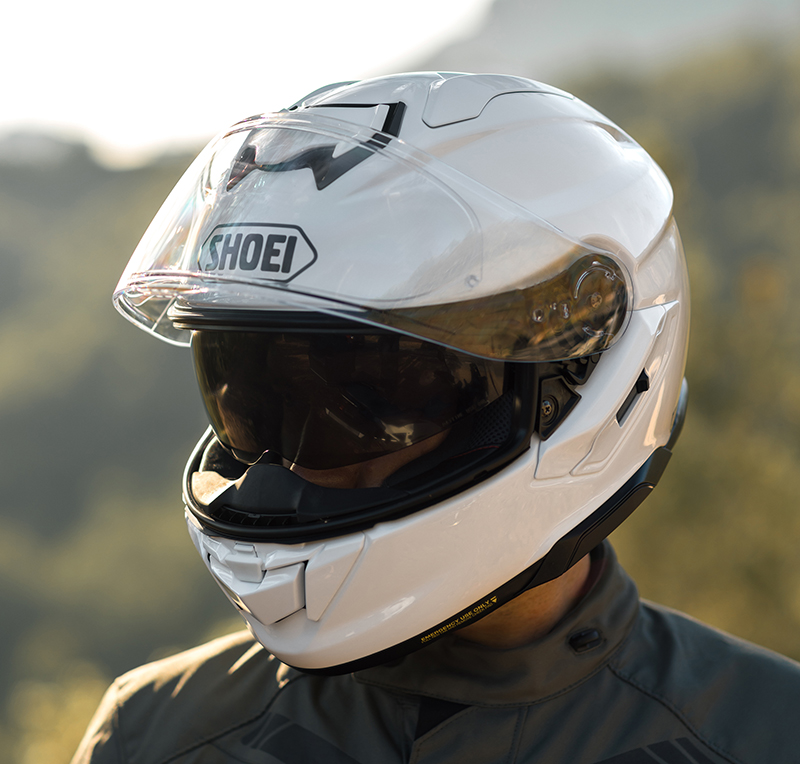
It cannot be said that the GT-Air 3 heralds many surprises. It is in essence the same helmet, subtly upgraded. Safer because of 22-06. Quieter. Better vented. An improved visor. A proper crack position. And potentially a little more comfortable.
If you liked the GT-Air 2, you will like the GT-Air 3. It is a better helmet. It was always the best sports-touring helmet on the market, and potentially that gulf has now been made a little wider.
But we have an admission to make. Whenever we look at a GT-Air, we ask ourselves why wouldn’t one go for a Neotec instead? Because of its tighter-fitting neck roll, the Neotec will be quieter. The flip front makes it easier to get on and off, and much easier to wear with glasses. Being wearable open or closed, the Neotec is more versatile. You don’t have to take it off at a petrol station, for example. Lifting the chin piece on a hot day can make life on the bike much more comfortable. And then there’s the fact that, in an accident, a flip gives first responders far easier access to your airways, and makes it easier for somebody to talk to you, and check your airways. Especially given that it takes two trained individuals to safely remove a full-face helmet.
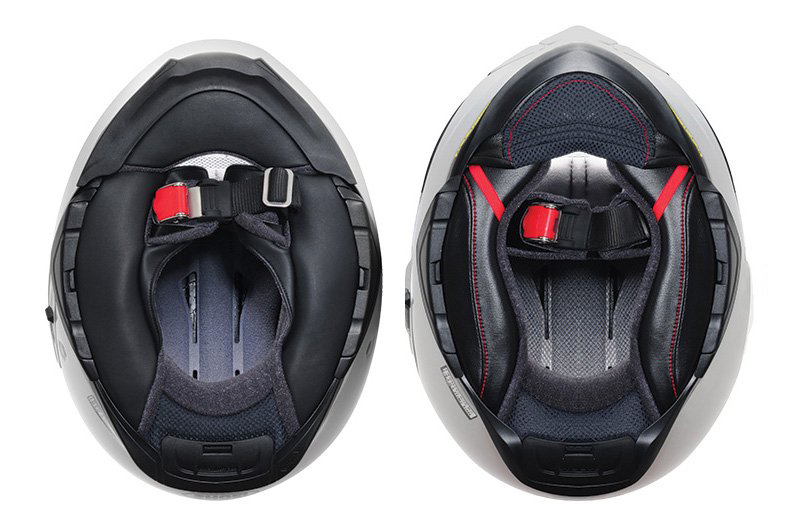
Of course, the real culprit here is little more than prejudice, and some bikers’ unwillingness to adopt new practices. But these days flips are not just for coppers and old farts who ride BMWs, as the perception was many years ago. The Neotec is far and away Shoei’s best-selling helmet. And whilst flips are not very retro, sometimes look wrong on a sportsbike, and don’t always appeal to the cruiser crowd, the truth is that, for most people, a flip is the sensible option. And the more miles you ride, the more convincing the argument becomes, because noise can be a killer. (Well it can be if you go deaf, and don’t hear a train coming)!
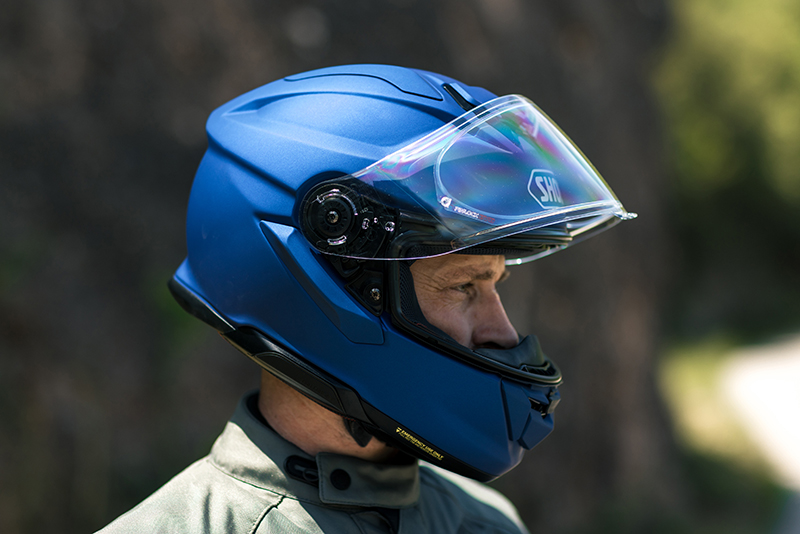
he GT-Air 3 is in stock in all its currently available colours and sizes. There won’t, by the way, be any Smalls and Extra Smalls until next March!
Prices start at £529.99 for shiny black, and for white. Other solid colours are £559.99. All the graphics are £649.99.
The SRL-03 comms. costs £339, but reduces by the VAT amount to just £282.52 when you purchase a comms. at the same time as you buy a helmet.
The sizes are Extra Small (54), Small (56), Medium (58), Large (60), Extra Large (62), and Extra, Extra large (64). But as ever, you cannot assume that if you measure your head you will get the size right. All heads have a different shape, as do the internals of all helmets. Shoeis, of course, can be the most difficult helmets to fit because they have the most oval shape of all. If you have a rounder head shape, a Shoei can be very painful. It’s always best to come in for a custom fit, although the changeable internal parts will not all become available until the end of the year.
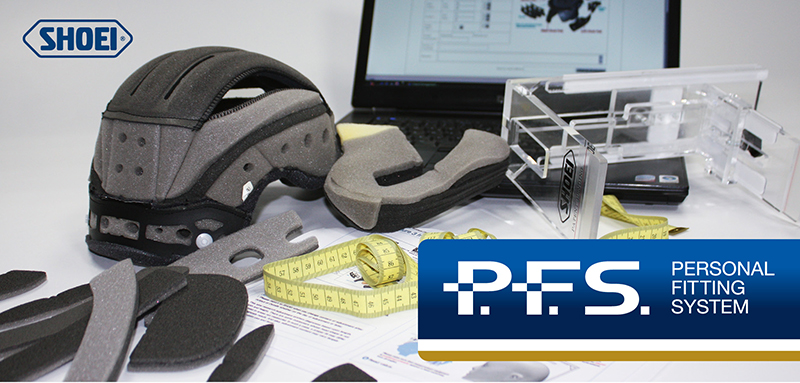
There is, of course, the prospect of a truly bespoke fit through Shoei’s new Personal Fitting System. This should be coming soon, but you can read about it by clicking here.
Finally, for those who care, the GT Air 3 comes in three shell sizes. XS, S and M share the smallest shell. L has its own shell. XL and XXL also share a shell. Out of interest, XS and S share the same eps, meaning that the only difference between them is the changeable cheekpads and headliners. The same applies to XL and XXL.
When they do arrive, we will have three different thicknesses of headliner for every helmet size. We will also have cheekpads in 31 mm, 35 mm, 39 mm and 43 mm, although the last ones are custom built-up by us.
If you like the idea of a GT Air 3, but want it to fit properly, the way it should, come and visit us in Guildford. It’s the best way of avoiding an expensive mistake. We’ll even let you take one out for a test ride!
For more information and to buy online, click Shoei GT-Air 3 helmet.
Share this story
































































